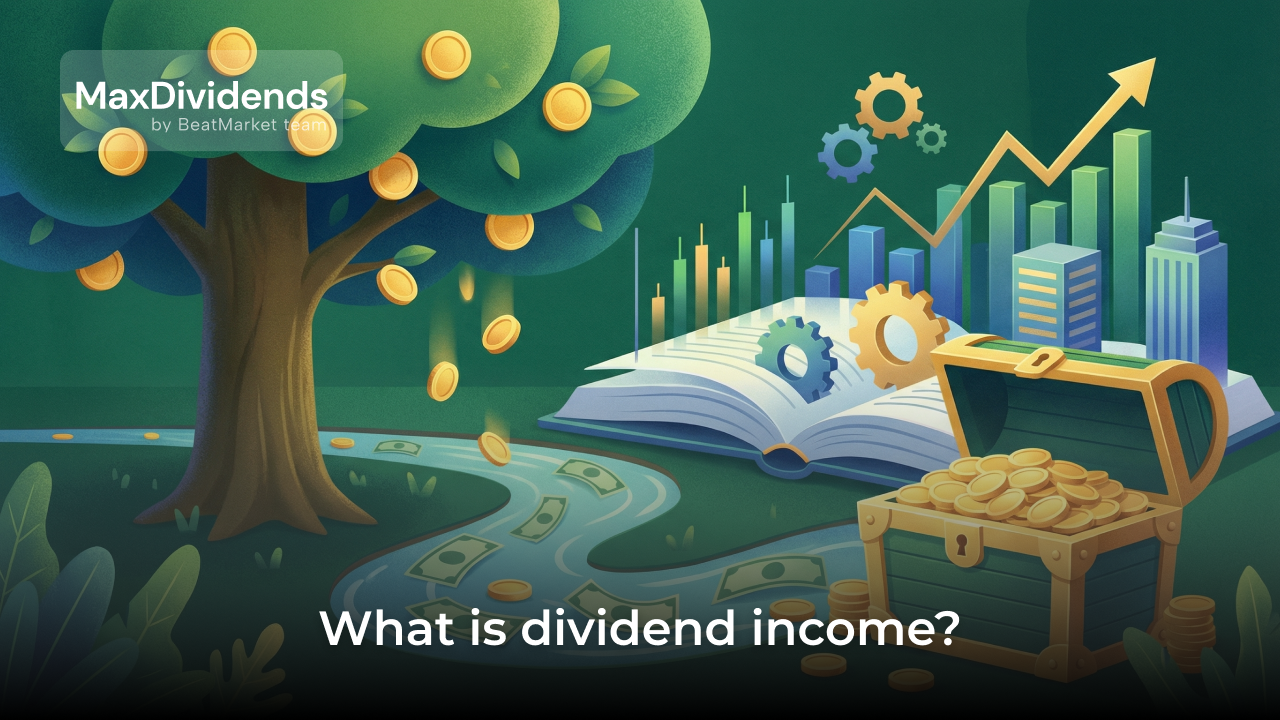Key Takeaways:
- What is a dividend recap? Dividend recap involves the payment of a special dividend, which is a form of share Leveraged Buyout financed through borrowed funds.
- This topic is relevant to individuals interested in portfolio diversification through participation in private credit investments.
- The LBO Model is used to reduce the risk-return potential. It provides immediate profits to shareholders.
Table of Contents
What is a Dividend Recapitalization?
For dividend recapitalization, a private equity firm initiates the issuance of additional debt by the portfolio company. These funds are used for dividend issuance. As a result, the internal rate of return (IRR) increases.
The capital structure changes due to special dividends. Equity decreases while total debt increases. This is reflected in the company’s balance sheet.
Types of Dividend Recapitalizations
There are two options for understanding dividend recapitalization process. The first is an unleveraged dividend recap, which can be used by a company with significant free cash flow. This method is less common than a leveraged dividend recap.
The ideal situation is where a company does not use cash flow on debt principal repayments. All earned funds are directed toward reducing equity. However, this solution is not feasible, as creditors require gradual repayment of the original debt.
Therefore, to increase the internal rate of return (IRR), the second option is to issue additional debt. This method leads to increased financial risk. However, it operates on the principle of the time value of money. The essence of this principle is that today’s cash income is more valuable than an equivalent amount in the future.
Process of Dividend Recapitalization
To understand what a recapitalization of dividends is, it is essential to know its key points:
- New debt issuance. This can involve the issuance of bonds or borrowing.
- Dividend distribution. The company pays special dividends that reduce equity.
- Altered capital structure. The debt-to-equity ratio increases.
- Repayment plan. A mandatory condition for raising additional funds is a financial strategy for repaying the new debt.
Dividend Recap Example Scenarios
To better explain what a dividend recap is, let’s consider an example. Take a company with the following capital structure:
- Equity: $150 million
- Existing debt: $70 million
The company raises additional borrowing of $30 million. Next, a cash distribution occurs. This money is paid to the PE firm in the form of special dividends. The result is an increase in leverage and a decrease in equity.
The company’s capital structure after the recapitalization of dividends looks like this:
- Equity: $120 million
- Existing debt: $100 million
This cash distribution allows for benefits to be realized shortly after the acquisition of shares, without waiting for an exit.
However, this mechanism only works for companies that show growth in financial results over time. If EBITDA declines, then recapitalization of dividends will not yield positive outcomes.
Leveraged Dividend Recap Example
Let’s take the example of a company that, over a 5-year period:
- steadily reduced its debt (from $600 million to $240 million);
- increased EBITDA (from $100 million in the first year to $140 million in the fifth year);
- was sold for $1,124 million and demonstrated an internal rate of return (IRR) of 17.9%.
If this company resorts to debt issuances in Year 3 equal to its EBITDA, it will increase the final IRR to 19%. This will occur due to earlier cash distribution. The money-on-money multiple will remain unchanged.
Dividend Recaps in Private Equity
Private equity firms use recapitalization of dividends to achieve the following goals:
- Increase returns on investments by enhancing the leverage of the portfolio company.
- Reduce risks for their investors and limited partners by distributing profits at early stages of development.
- Return a portion of the initial investments while maintaining an ownership stake in the business.
- Achieve value crystallization (used as an alternative to standard exit strategies, such as an initial public offering).
Benefits of Dividend Recapitalizations
Thanks to the dividend recap strategy, private investors receive:
- Early returns. This is one way to enhance the performance of the investment fund.
- Improved internal rate of return (IRR). This metric largely depends on the timing of cash distributions.
- The opportunity to gain tax advantages (compared to capital gains). In many jurisdictions, the tax rate on dividends is lower than on capital gains. However, this advantage may not be realized in all countries.
An analogy can be drawn with commercial real estate loan refinancing. This is a method to amplify returns by utilizing additional debt.
H3: Benefits for Portfolio Companies
The first advantage is a tax shield due to the increase in debt obligations on the portfolio company’s balance sheet. Interest payments on the new debt can be deducted from the taxable income.
The second advantage is the enhancement of management discipline. This results from the increased debt servicing requirements. The rise in mandatory repayments encourages a greater focus on improving operational efficiency, reducing costs, and increasing free cash flow.
Alternative Strategies to Dividend Recaps
An alternative to IRR increase through additional borrowing could be no debt repayment in the initial years. In this case, cash flow is directed to shareholders each year.
The company pays dividends from its own earnings rather than from borrowed funds. However, since these are special dividends rather than regular dividends, this results in a reduction of equity capital. IRR also increases due to the principle of the time value of money.
But this scenario is unrealistic. Lenders will demand the debt principal repayment.
Risks and Disadvantages
With a proper understanding of dividend recapitalization, it becomes clear that it is a double-edged sword. On one hand, this move amplifies returns for a successful company. On the other hand, it increases financial risk in the case of low performance. If a company has a negative IRR, the situation will only worsen with increased leverage.
For example, consider a company that over five years:
- steadily reduced its debt (from $600 million to $331 million);
- experienced declining EBITDA (from $100 million in the first year to $81 million in the fifth);
- was sold for $650 million and demonstrated an IRR of -3.5%.
Suppose, like the successful company in the first example, this unprofitable company attempts to increase its debt in the third year. As a result, the IRR will be even lower.
High debt reduces credit ratings. Consequently, borrowing capacity deteriorates. This results in decreased financial flexibility for the company. During economic downturns, this can potentially lead to bankruptcy.
Implementing a Leveraged Dividend Recap in an LBO Model
The implementation of a dividend distribution system within the LBO model requires minimal effort if the company already has a well-developed debt schedule. Below is a step-by-step modeling technique.
Step 1: Additional Debt Issuances
The first step is to account for additional debt issuances or new term loans. This financing should be reflected in the Cash Flow Available Before Revolver or Cash Flow Available for Debt Repayment sections.
Step 2: Mandatory Repayment Schedule
The next step in the instructions on how to model a dividend recap is to input the information regarding the additional issuance of debt for dividend payments into the mandatory repayment schedule. It is necessary to reflect the increase in debt in the debt report under the loan line with the corresponding interest rate.
Step 3: Optional Repayment
The formula in the optional repayment column or Cash Flow Sweep does not need to be changed. It subtracts mandatory repayments for the period.
If the interest calculations are performed automatically based on the changes in the debt balances over time, this system also does not need to be altered.
Step 4: Cash Flow Statement
Three changes are made to the cash flow statement:
- the amount of dividend issuances (excluding issuance fees) is subtracted;
- proceeds from borrowed funds are added;
- the amount of issuance fees is indicated.
Step 5: Income Statement
The income statement needs to be updated to reflect the amortization of financing fees. This accounts for the additional fees associated with the term loan issuance.
If the company distributes special dividends as a one time event, this amortization will have a minimal impact on the company’s taxes. However, if such payments occur annually, the cumulative effect will be significant.
Balance Sheet Impact
The impact of recapitalization of dividends is clearly visible on the balance sheet:
- the debt balance increases;
- common shareholders’ equity decreases.
Returns Calculations
The final step is the returns calculations after the payment of dividends. This is done with the assumption that the received funds will be reinvested. As a result, due to the earlier return of funds, the overall IRR is higher. However, if the amount of one time dividends is insignificant compared to the initial debt and the multiple on invested capital, the difference will also be negligible.
Market Considerations for Dividend Recaps
From the answer to the question of what are dividend recaps, it becomes clear that they are most effective during borrower-friendly debt markets and low interest rates.
This is a tool that can help achieve strategic goals. However, its downside is the ability to worsen unfavorable situations. Using leverage to enhance investor returns requires deep knowledge in financial engineering.
Ideal Scenarios for Dividend Recaps
Recapitalization of dividends is beneficial for high-growth companies and high FCF margin companies. In these cases, financial performance allows for rapid debt paydown, opening up opportunities for new financing.
This strategy is suitable for companies that have not been able to raise sufficient capital, for example, those that have only borrowed 2-3 times their first-year EBITDA. This typically occurs in emerging markets and frontier markets. In this case, multiple recapitalization of dividends during the holding period will significantly alter the final outcome.
Conclusion and Risk Warning
For investors asking what is a dividend recap and its practical impact, recap of dividends may have a minor impact on the investment decision. An impact analysis shows that it can improve the results of projects that are on the edge of acceptable profitability. However, it cannot turn high-risk investments for capital loss into guaranteed profitable businesses.
The insignificance of the impact of recapitalization of dividends is due to the small amounts involved. Typically, the size of the payout is significantly lower than the purchase multiples, exit multiples, and the initial debt.
FAQ
How does a dividend recap work?
The essence of recapitalization of dividend lies in the reduction of equity capital. At the same time, debt obligations increase. As a result, financial flexibility is lost.
What is the purpose of recapitalization?
The main objective is to increase the IRR. This is achieved through the principle of the time value of money.
How does a recap work in private equity?
Recap of dividends allows a private equity firm to free up some of the funds invested in the equity of a portfolio company. This strategy is one way to ensure liquidity of net capital.
What are the disadvantages of recapitalization?
As a result of recap of dividends, the debt on the company’s balance sheet increases. Consequently, the likelihood of defaulting on debt and bankruptcy rises. The growth in financial obligations reduces the financial flexibility of the company and makes it more vulnerable to adverse market conditions.
Is a recapitalization taxable?
Yes, the payment received by the shareholder is subject to taxation. However, the company can deduct the expenses related to servicing the new debt from its taxable income.
Article Sources
- Dividend recapitalization.
- The Legal Risks of Dividend Recapitalizations.
- Understanding Dividend Recapitalization, With Example.
You Might Also Like
- MLP Investments: Understanding Dividend Stocks and How to Invest in Them
- How to Calculate Dividend Yield: A Step-by-Step Approach for Investors
- High Yield Monthly Dividend Stocks: How Qualified and Ordinary Dividends Are Taxed Differently






